Street food: Thai foodies defend Bangkok vendor culture
- Published
Bangkok street food 'is what defines us'
In a city where eating well is an obsession, a statement by a senior official last month, published in a national newspaper, caused a public outcry.
Vallop Suwandee, who chairs an advisory board to the governor of Bangkok, was quoted as saying that street vendors would be removed from all 50 districts of the city.
It seemed that one of the most popular and distinctive aspects of Bangkok life was to be wiped out, days after CNN had voted Bangkok the best place in the world for street food, and just two months before the city government was planning to hold a street-food festival.
Mr Vallop now says he was misquoted: "Let me be clear, on behalf of the city of Bangkok. Street food will continue to be part of Bangkok life, on the condition that there will not be obstructions for pedestrians, and that the vendors observe sanitary rules in the interest of public health.
"We will allow them to be in certain areas, under strict conditions."
This is not the first time the Bangkok Metropolitan Authority (BMA), which is responsible for running the city, has tried to impose order and standards on the hundreds of thousands of food vendors operating on the streets.
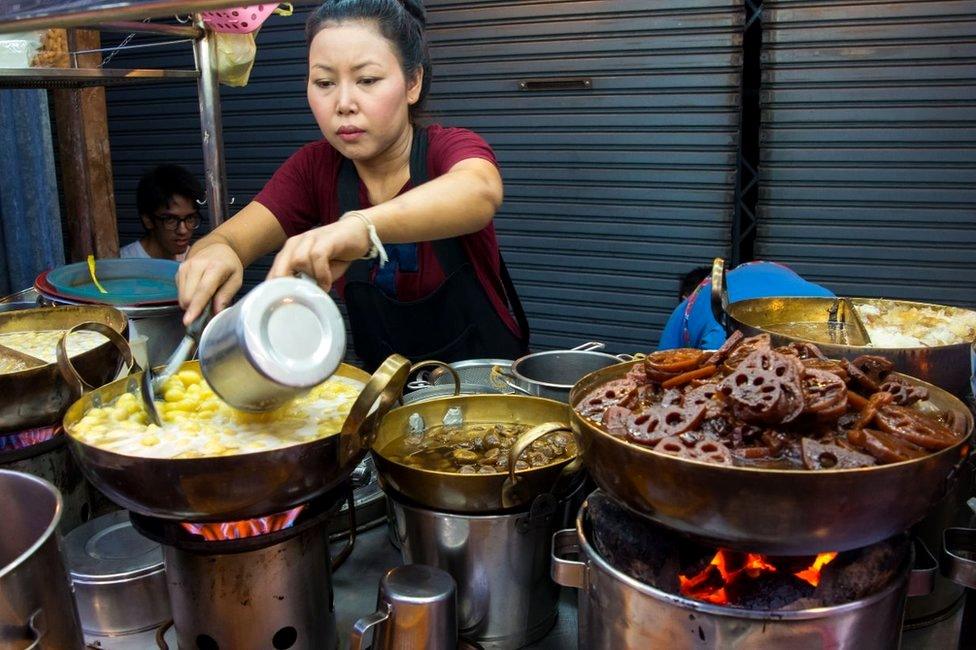
A vendor preparing the Thai dessert bae guay
Right after the BMA was first established in 1972 it launched a similar campaign to force the vendors to operate in designated markets instead.
Variations of that campaign were revived every few years but implementation has always been weak because the BMA recognised the vital role street vending played in providing a source of income in difficult economic times. Most of the time it has quietly chosen not to push too hard.
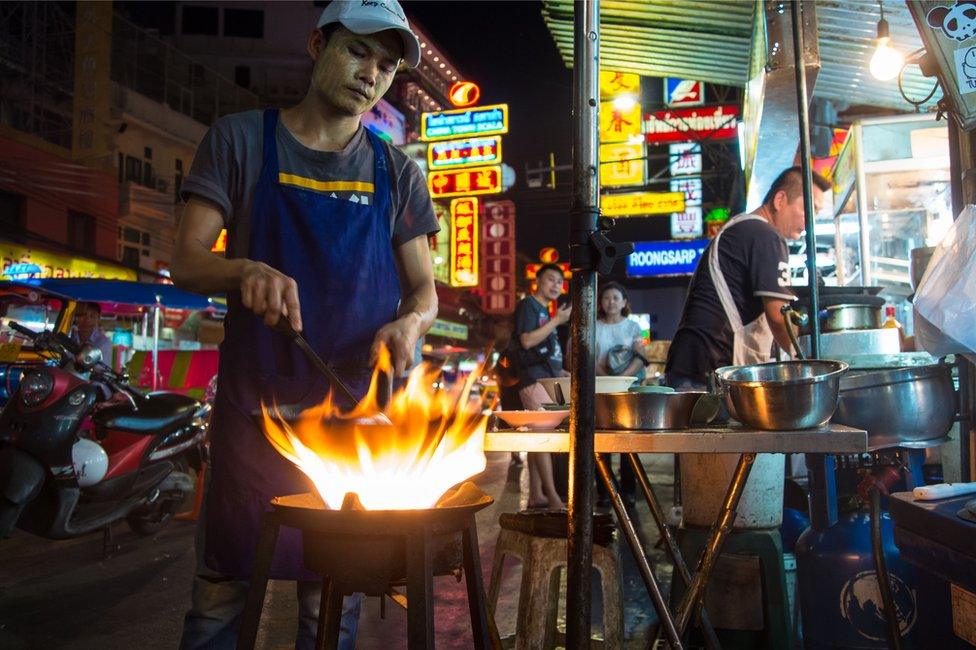
Many street hawkers cook their food in woks over fierce heat
A lack of space?
This time may be different. The number of officially approved locations for street food vendors has been cut dramatically, from a peak of 726 four years ago to 243 by the end of last year.
Tens of thousands of vendors have been forced to move already, leaving many downtown areas like Siam Square, Asok and Silom with few or no street-food stalls now visible during the day and night.
The most recent area to be cleared is the increasingly wealthy neighbourhood of Thonglor. A small side street, or soi, which for many years had been famous for its street food, is no more, although city officials say the vendors were offered alternative locations in smaller sois further away.
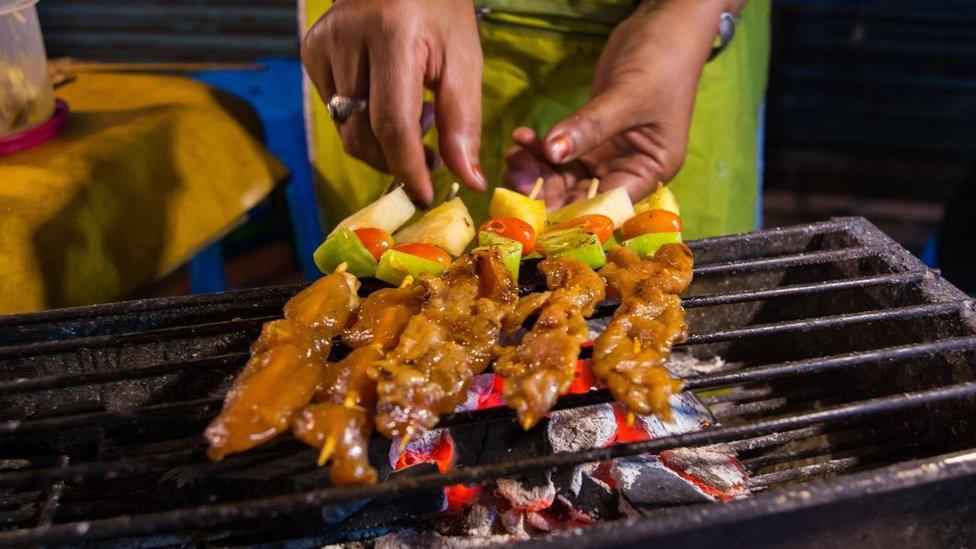
Satay, or meat skewers, grilled over charcoal
The BMA is not being specific about its ultimate plans but it looks as though it aims to have street-food confined to a very few well-known city-centre areas, like the backpacker hangout of Khao San Road and Yaowarat Road, which runs through the historic Chinatown area, and to be more widely permitted in outer city neighbourhoods.
With growing numbers of tourists and commuters coming into the downtown area, Mr Vallop says there is not enough space for street vendors.
A vendor may occupy a space where land prices run to many thousands of dollars per square metre, he told me - why should one person have that privilege? He said the BMA had received many complaints about blocked pavements.
'It's Thai culture'
These arguments, though, have been lost in the furore over the perceived threat to the city's much-loved street-cuisine.
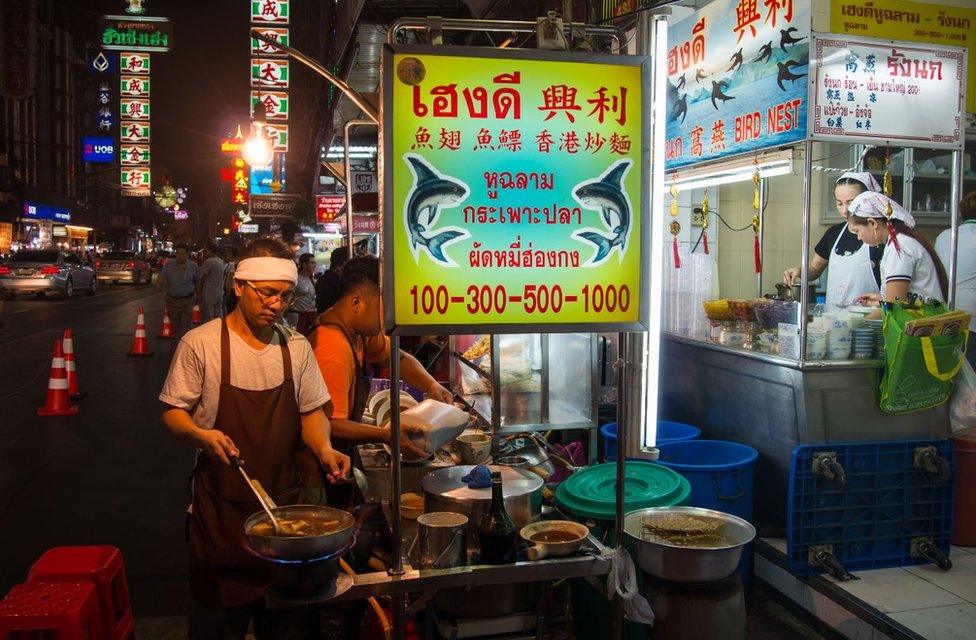
The shark's fin soup stall is well known on Yaowarat Road
Chawadee Nulkair is a self-styled street food fanatic who publishes a blog, bangkokglutton.com, cataloguing her culinary discoveries. She opposes the BMA's move against the vendors, even though she acknowledges the inconvenience to pedestrians.
"As much as we complain about the clutter and the chaos," she told me, "this is what defines us.
"This street food is Thai culture. Motorbikes drive on the pavements here. Even without the vendors the pavements would still be awful."
Chawadee took me to Yaowarat Road, sometimes described as the birthplace of street food, and still one of the best places to eat in Bangkok.
She explained how the Chinese immigrants, who settled in large numbers in the 19th Century, began cooking food along the roadsides to make a living, using simple stoves and iron woks.

Thailand's food hawkers are a part of Bangkok's street culture
That style of cooking, along with classic Chinese ingredients like noodles, significantly changed Thai cooking.
Street food has also become an essential service for the growing numbers of commuters, who may have long journeys to and from work, and limited time and space to cook at home.
Family traditions
We passed a number of stalls sending out mouth-watering aromas into the night air, before settling on a stall Chawadee knew would cook an excellent prawn noodle hot pot, a classic Thai-Chinese dish.
The kitchen was set out on the front steps of a bank, with the chef cooking fried rice and noodle dishes at lightning speed, sheets of flame curling around his blazing wok.
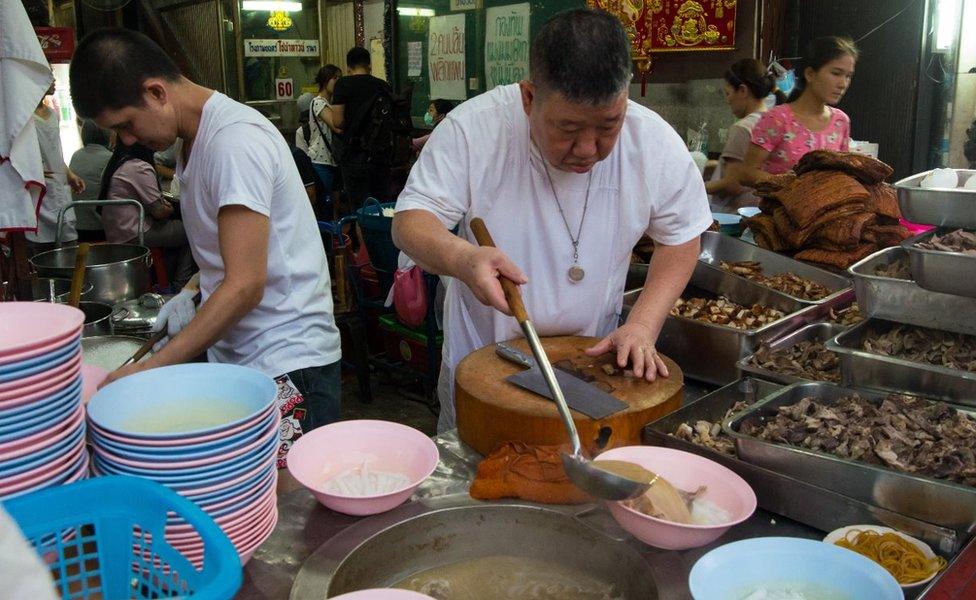
This stall is well known for its crispy pork noodles
The stall has been run by Voracha Rujarawan and her family for three generations. She is worried by the city government's plans. Already she has to make regular payments to local officials and the police. Now they are insisting she needs proper dish-washing facilities, although it is not clear how they can do that without running water.
On cue, a uniformed municipal officer arrived and started questioning her at length about how she would meet the tougher new hygiene standards.
The city's argument that public demand for better pedestrian access has also been challenged by a survey carried out by the Urban Design and Development Centre, a city planning project started by the architecture faculty at Chulalongkorn University, which is actually campaigning to make walking better in Bangkok.
A third world symbol?
The UDDC Director, Niramon Kulsirisombat, says the survey of more than 1,000 respondents showed that food vendors were not considered the worst problem; in fact Bangkok's typically narrow pavements are such an obstacle course of electricity poles, hydrants, disused phone boxes and road signs that pedestrians usually find themselves walking in the road even without food stalls.
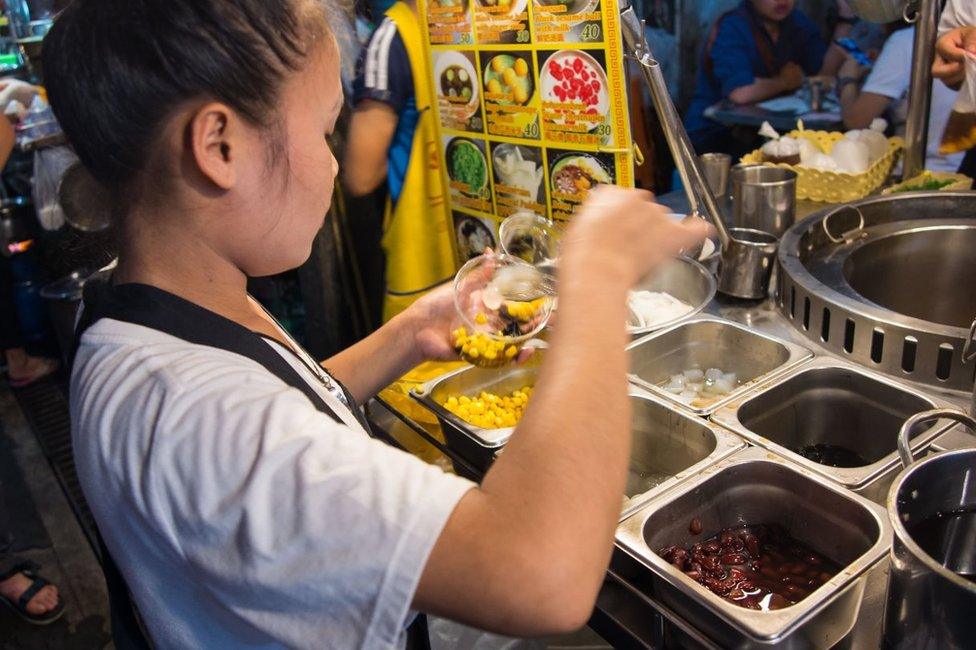
You can get plastic cups of Thai dessert from some stalls
She said there were too few channels for Bangkok's residents to have their views heard by the city government; that it took too much of a government-knows-best, top-down approach to development.
This criticism has also been applied to the BMA's controversial decision to demolish a historic community in old Bangkok to make way for a tourist park, and its ambitious plan to build a concrete walkway 10m (33ft) wide and 14km (nine miles) long, along the bank of the Chaophraya river.
"The reasons the BMA gives for moving the street food, blocking the pavements and hygiene, are not enough. Like Singapore 50 years ago, when Lee Kwan Yew began modernising the city, they said we have to move all this street food chaos, that it is a symbol of a third world country. But actually, in Bangkok, you should see street food as a form of life support for so many people."
- Published25 November 2014

- Published5 September 2012